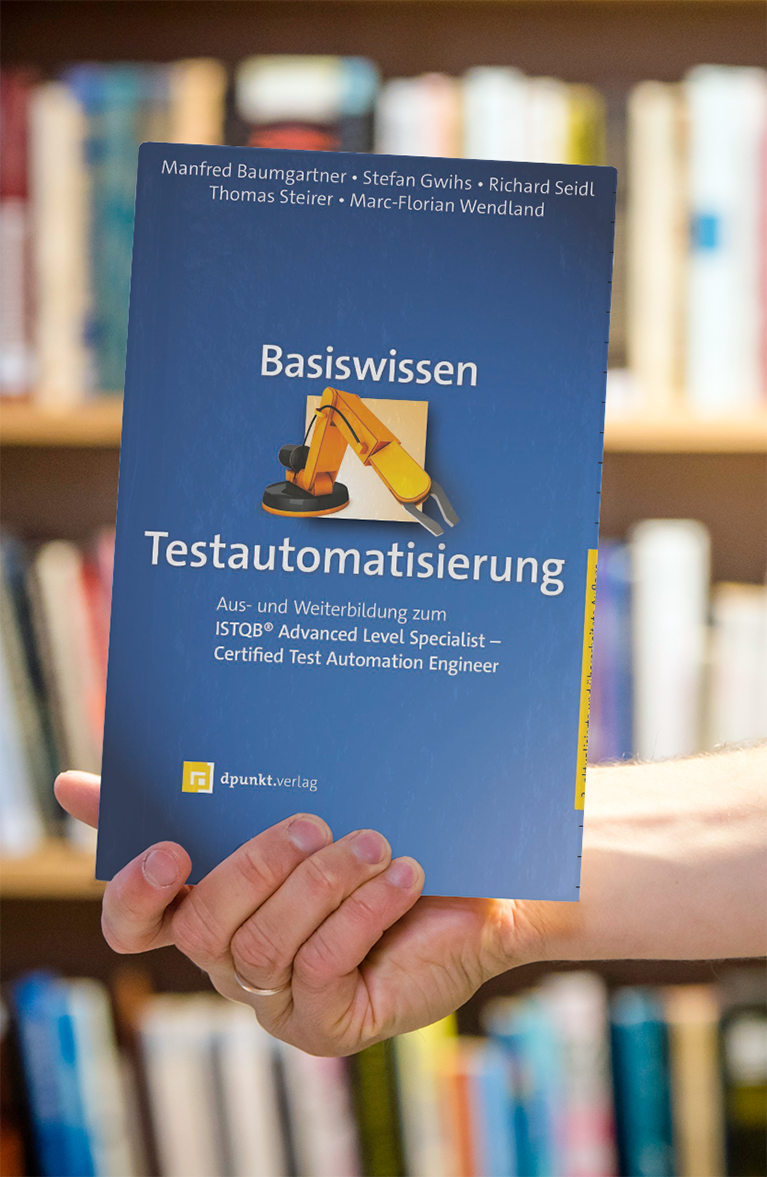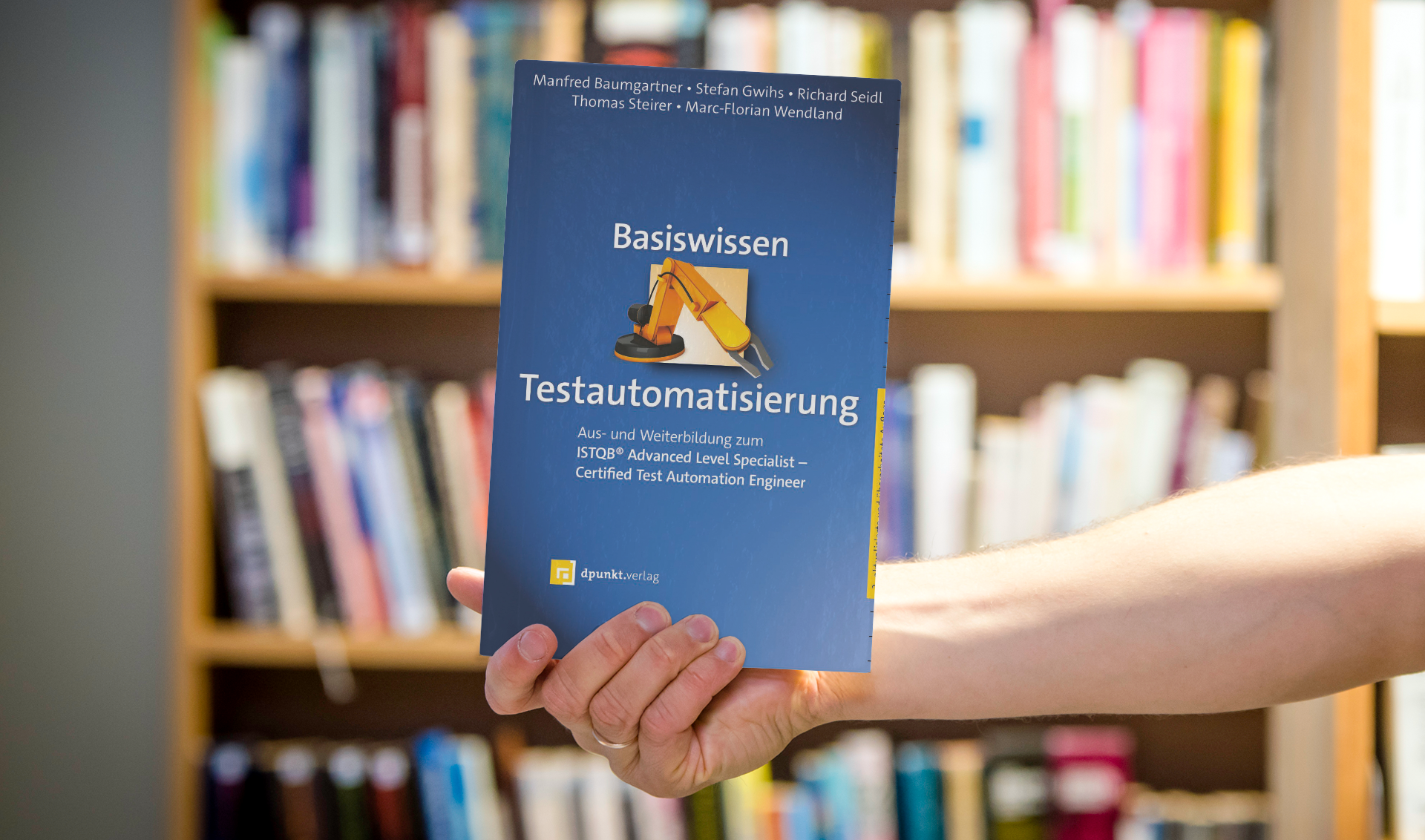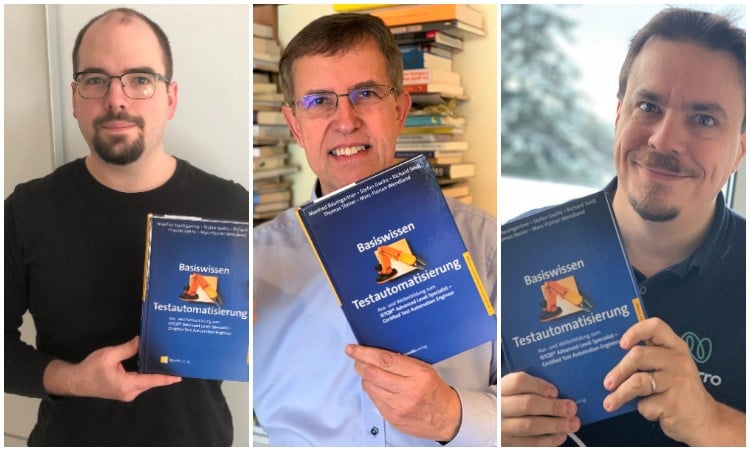Article 16 Feb 2021 5 min read
Can a reference book on test automation be a bestseller? You bet if Nagarrians co-write it!
The third edition of Basiswissen Testautomatisierung (published in German) is released recently in the market. Translating to The Basic Knowledge of Test Automation, the book has five authors, three of who are from Nagarro (Manfred Baumgartner, Thomas Steirer, and Stefan Gwihs). We catch up with them for a quick interview 😊


The third edition of Basiswissen Testautomatisierung (published in German) is released recently in the market. Translating to The Basic Knowledge of Test Automation, the book has five authors, three of who are from Nagarro (Manfred Baumgartner, Thomas Steirer, and Stefan Gwihs). We catch up with them for a quick interview 😊


Nagarro
“The first rule of any technology used in a business is that automation applied to an efficient operation will magnify the efficiency. The second is that automation applied to an inefficient operation will magnify the inefficiency.” - Bill Gates
As Gates has said, how we leverage automation - to our advantage or otherwise, is subject to the operation's efficiency and productivity. But the undeniable fact is that it is here to stay. Test automation has ranked high on the priority list of almost all companies that produce or implement software. But how well do we know it? Are claims like "100% test coverage, 400% increase in efficiency" valid? Let us find out.
The first edition was released at the end of 2011 and got sold out within a short time. So did the second expanded edition in 2015. Why have you revised it again and even expanded it by 106 to 398 pages? Has so much changed in the field of test automation in recent years?
[Manfred Baumgartner] Yes, a lot has happened! Like all areas of software development, test automation is subject to rapid technological changes. Several factors come together: general market trends such as digitization, Internet of Things (IoT) and artificial intelligence; trends in development like DevOps and agile; and the further development of the many automation tools which open up new possibilities. There were also innovations on the training and professionalization side. In 2019, the curriculum for the ISTQB © Certified Test Automation Engineer (test automation developer) was published in German. We wanted to cover this important area in the book "Basic Knowledge of Test Automation".
There is a lot of focus on the topic of architecture and maintenance of test automation solutions in the book. Why so?
[Stefan Gwihs] When introducing test automation solutions in projects, we have seen that the initial implementation is not a huge challenge. Rather, challenges show up when changes are pending (e.g., new technologies that need automation) or during long-term, sustainable maintenance of large test automation solutions. The ISTQB © curriculum and our book focus precisely on how to prevent such problems.
Who is this book aimed at?
[Manfred] Essentially, the book is for anyone who is or will be dealing with test automation, as a beginner or an expert. It is useful for those who are more responsible for the design and architecture of a test automation solution, and those who primarily work in the operational implementation of an automated test set. Besides, the new edition is helpful to anyone who aspires to be an ISTQB © Certified Test Automation Engineer.
We hear the claim: “100% test coverage, 400% increase in efficiency, significantly reduced risk, faster time-to-market, and constant quality”. Is this a realistic expectation?
[Thomas Steirer] In our experience, when test automation is concerned, many promises are made that cannot be kept realistically. We want to prevent tool manufacturers or consultants from disappointing clients because of unrealistic expectation setting. Test automation is not just a question of tools and their performance, but of robust, and at the same time, flexible technical concepts coupled with practices that make it possible to better cope with the constantly growing software testing requirements. The focus is not on pure cost reduction but on the sustainability of the investment in test automation and the actual business value it brings to the business. 
Our authors (from left to right) Stefan Gwhis, Manfred Baumgartner, and Thomas Steirer
You are actively involved in software projects. What is your experience in dealing with test automation in everyday life?
[Stefan] Lately, we notice a closer interlinking of test automation with other activities in the software development cycle. Test automation is seen less as an isolated activity but more as an integral part of software development.
[Thomas] In current software development, test automation is not “just” an added value. It is an essential tool, without which a truly agile approach with short and fast test and release cycles is not possible.
Why are there five authors?
[Manfred] There are some good reasons for that! The field of test automation is more complex and extensive now; so we wanted to make sure that all areas are optimally covered, and we guarantee quality assurance. The two other authors, Richard Seidl and Marc-Florian Wendland (members of the German Testing Board (GTB) working group “Test Automation Developers (TAE)”) also helped with the German translation of the syllabus from English, which helped a lot with content restructuring and in writing the new content.
How long did you work on the book, and how did you arrange the collaboration, besides your full-time job?
[Stefan] About 2 years ago, we started to revise the content significantly. We could not be consistently intensive due to professional and private responsibilities, and then the pandemic started. Remote collaboration, however, was relatively hassle-free, thanks to the modern collaboration tools and our professional compatibility! We finally achieved it through a lot of coffee and night shifts 😉
When can we expect the 4th edition? As you look to the future, what could be the challenges in this area?
[Thomas] DevOps as a culture and basis for fast release processes, artificial intelligence and other technologies that enable new, broader possibilities and higher scalability, will increasingly find their valuable place in the toolboxes of automation developers. In the current edition, we have only touched on these topics briefly. In a possible 4th edition in maybe 2-4 years, we will delve more on these aspects in the context of test automation. But of course, we will also keep an eye on the further development of the ISTQB © curriculum.
About the book
Often, the fear of the first investments in tools and training or false expectations can come in the way of comprehensive test automation. The book counters these fears with specific instructions and shows how we can introduce automated tests in various project types and application architectures. Additionally, in the appendix, we will find an overview of the software quality features according to ISO 25010, an introduction to load and performance tests, and an exemplary catalog of criteria for selecting test tools.
If interested, you may buy the book here. Before that, you may check these excerpts.
Are you interested in connecting with the authors? Feel free to reach out to them:
- Authors & Nagarrians: Stefan Gwihs , Thomas Steirer , Manfred Baumgartner
- Co-authors: Richard Seidl , Marc-Florian Wendland



